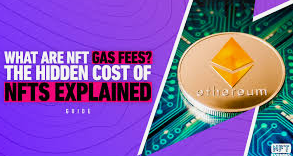Knowing the Gas Fees: How to Efficiently Reduce Minting Cost for NFTs Gas fees in mining NFTs are something almost everyone overlooks. Understanding how gas fees work will help creators find ways to lower their costs while minting them. This knowledge could make a great difference, especially for the newbies in the NFT space.
Mastering the ways of gas fees saves money for both artists and collectors. There are various strategies that will be employed in order to reduce these expenses and make sure they receive maximum value from their creations. With the right tips, anyone can successfully mint NFTs without breaking the bank.
As the world of NFTs continues to grow, it does so hand in hand with the aspect of keeping costs managed efficiently. Knowledge about gas fees is vital for anyone who enjoys this adventure in the digital marketplace.
Key Takeaways
- One can save loads in understanding gas fees when minting NFTs.
- These various strategies alluded to in the text really do work for minimizing the cost of minting.
- Knowledge about gas fees improves success in the NFT market.
Demystifying NFT Gas Fees
Most of the users of NFT are bewildered by NFT gas fees. Understanding what these fees are and how they work is, therefore, utterly important for minting or trading in NFTs without spending a fortune. In this section, I will break down what gas fees are, how blockchain networks affect them, and the various factors that influence their cost.
What Are Gas Fees?
Gas fees refer to the cost of processing transactions on a blockchain. Every time a person mints an NFT, they pay these fees to the network.
These fees are counted in units called “gwei,” a fraction of Ethereum. For example, 1 gwei is equal to 0.000000001 ETH.
The fees are not fixed and may fluctuate according to the demand imposed on the network. If the demand for the network is high, this results in very expensive gas fees; contrarily, the gas fee is lower with low demand.
The Role of Blockchain Networks
Not each blockchain network processes the transactions in the very same manner. For example, Ethereum, the most popular platform when it comes to digital ownership and NFTs, faces heavy traffic very frequently. This itself can lead to an increase in gas fees.
Other blockchains, such as Solana and Tezos, charge minimal fees as these work through different architectures altogether.
As a user, one must remain completely aware of the blockchain which they will use for their NFT-related transactions since every other network has its own fee mechanism.
Factors that Influence Gas Fees
A few factors cause an impact on gas fees.
High traffic increases fees in network congestion.
- Complexity of Transaction: The more complex a transaction is, the more computational power is required.
- Time of Day: The fees can vary at any time; this may see the best fees for a user during off-peak hours.
These factors, when understood, will therefore help a user more accurately estimate the cost of minting NFTs. They save money by timing their transactions appropriately and selecting the appropriate blockchain.
Minimising the Cost of Minting
However, minting NFTs can be very expensive due to its gas fee. Using smart strategies can considerably reduce such costs for a user. Here are effective methods.
Ideal Time for Sending Transactions
Timing plays a lot in gas fees. Fees are mostly low on weekends or at any off-peak hour of the day. A user should monitor network activity using EthGasStation or Gas Now. These platforms depict real-time gas prices.
Users of the third party can also wait for fees to drop before minting. Prices can wildly fluctuate throughout the day. Making transactions in these windows of low fees can save a person money.
Tip: A good tip is setting up alerts for low gas prices. In such a case, a user can mint at the instance when fees decrease.
Using Layer 2 Solutions
One way to try and avoid these high gas fees is with Layer 2 solutions. These technologies operate atop the main blockchain, helping speed up the transaction and lower costs in general.
Examples include Polygon, Optimism, and Arbitrum. These allow users to mint NFTs for a fraction of the cost compared to the main layer of Ethereum.
There may be some setting up required in switching to a Layer 2 solution. For those who tend to save over the long term, it could be worth the substantial savings.
- Advantages include: Spending less by quicker and cheaper dealings.
Budgeting Gas Fees
Preparation is a very key aspect in trying to minimize the cost of minting. First, research typical gas fees prior to starting. This helps in planning your budget effectively.
It makes prudent sense that every NFT-related effort you plan will need to have a budgeted amount of money specifically set aside for gas. By the end, one will be able to do a budget on how many NFTs one needs to Mint, keeping aside unexpected costs.
Suggestion: Keep some small reserve of funds for gas fees. This covers any increase in fees when “Mint” is pressed.
These approaches are some useful ways through which a user can minimize most of the costs associated with the minting of NFTs.

Also Read :